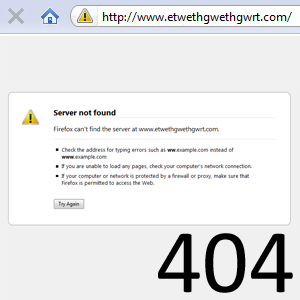HTTP Status Code, Web Page Error Codes
HTTP Status Code Definitions – Web Page Error Codes
We will discuss the common error codes associated with your website and web hosting account. The definitions for these status codes have been excerpted from the World Wide Web Consortium’s webpage; “HTTP/1.1: Status Code Definitions“. All credit for quoted information is assumed given to W3C. They are an excellent group. Visit the previously listed page for all HTTP status code definitions.
404 Not Found Error
 “10.4.5 404 Not Found
“10.4.5 404 Not Found
The server has not found anything matching the Request-URI. No indication is given of whether the condition is temporary or permanent. The 410 (Gone) status code SHOULD be used if the server knows, through some internally configurable mechanism, that an old resource is permanently unavailable and has no forwarding address. This status code is commonly used when the server does not wish to reveal exactly why the request has been refused, or when no other response is applicable.”
You are used to seeing this in Internet Explorer and FireFox as “Server not found” or “Web page not found”. This status code means the filename or folder is not found; it does not (currently) exist. Depending on your server and hosting account, you may be able to modify or replace the templates used for these pages. Adding your company’s logo or a brief contact form or phone number is a great idea.
